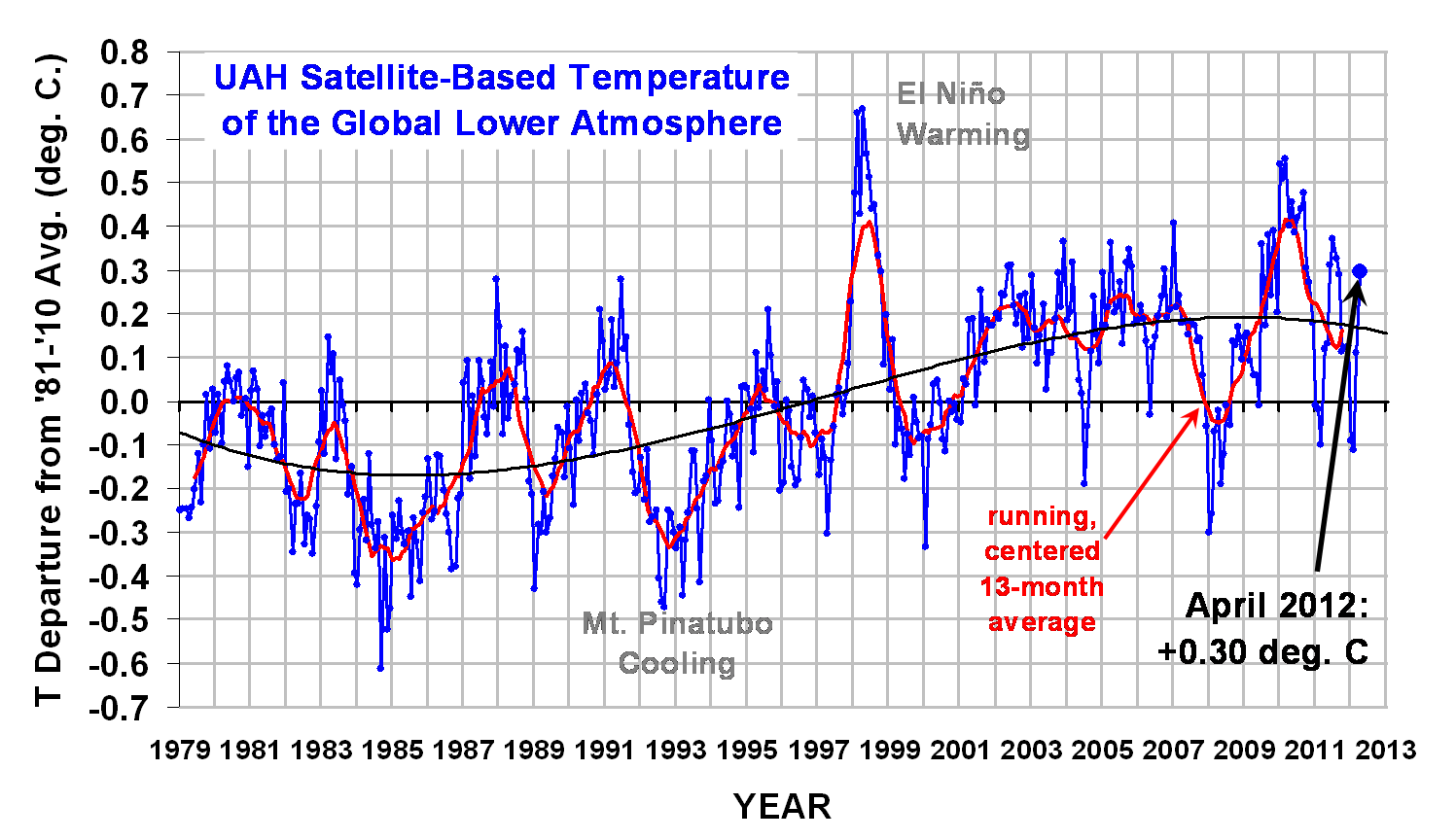The global average lower tropospheric temperature anomaly increased again in April, 2012, to +0.30°C., with warming in both Northern and Southern Hemispheres, but slightly cool conditions persisting in the tropics (click on the image for the full-size version):

The corresponding April anomaly from RSS, using a common baseline period of 1981-2010, is considerably cooler at +0.21°C. The 3rd order polynomial fit to the data (courtesy of Excel) is for entertainment purposes only, and should not be construed as having any predictive value whatsoever.
Here are the monthly stats:
YR MON GLOBAL NH SH TROPICS
2011 01 -0.010 -0.055 +0.036 -0.372
2011 02 -0.020 -0.042 +0.002 -0.348
2011 03 -0.101 -0.073 -0.128 -0.342
2011 04 +0.117 +0.195 +0.039 -0.229
2011 05 +0.133 +0.145 +0.121 -0.043
2011 06 +0.315 +0.379 +0.250 +0.233
2011 07 +0.374 +0.344 +0.404 +0.204
2011 08 +0.327 +0.321 +0.332 +0.155
2011 09 +0.289 +0.304 +0.274 +0.178
2011 10 +0.116 +0.169 +0.062 -0.054
2011 11 +0.123 +0.075 +0.170 +0.024
2011 12 +0.126 +0.197 +0.055 +0.041
2012 01 -0.090 -0.057 -0.123 -0.138
2012 02 -0.112 -0.013 -0.212 -0.277
2012 03 +0.110 +0.129 +0.092 -0.108
2012 04 +0.295 +0.411 +0.179 -0.120
As a reminder, the most common reason for large month-to-month swings in global average temperature is small fluctuations in the rate of convective overturning of the troposphere, discussed here.

 Home/Blog
Home/Blog



